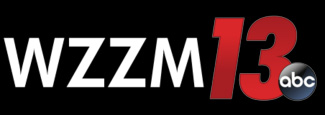Cardiovascular
Atrial Fibrillation: A Growing Heart Problem
Patients More at Risk for Stroke Than Cardiac Arrest
While most of the focus during heart month in February is on preventing or recognizing heart attacks, a heart rhythm abnormality is growing with our aging population and becoming a major risk for stroke. Atrial fibrillation is the most common cardiac arrhythmia-abnormal heart rhythm-and as the number of cases grows, so do the options for treatment.
Atrial fibrillation (AF) is an abnormal, irregular and fast heart rate with electrical signals that are improperly generated in the upper chambers of the heart (atria). Some experts explain it as the top part of your heart shaking like Jell-O and beating more rapidly than the lower chambers of the heart.
“Most patients feel an uncomfortable flutter in their chest or an irregular pulse,” says Bohuslav Finta, MD, a cardiologist at Spectrum Health’s Fred and Lena Meijer Heart Center. He is an electrophysiologist-a cardiologist that specializes in treating abnormal rhythms of the heart. “People experiencing AF can feel lightheaded, tired, have shortness of breath, even sweating and chest pain. These are symptoms not to be ignored and people should contact their physician immediately if they experience any of these problems.”
AF is common in the elderly. About 2.3 percent of people over age 40 have it and that figure increases to 10 percent in people age 70 or older. Seventy percent of the two million Americans who have AF are between 65 and 85 years old.
This condition in itself isn’t life-threatening and shouldn’t lead to cardiac arrest, says Finta, who also is a partner in the West Michigan Heart cardiology group. However, it can lead to other rhythm problems, chronic fatigue, congestive heart failure and worst of all-stroke. “People with AF have a five times greater risk of stroke. About 15 to 20 percent of all strokes occur in people with AF, so the diagnosis, treatment and monitoring of these patients is important.”
Stroke occurs in AF patients when blood clots form in one of the quivering atria, break off and are carried to the brain, where they block blood flow. “Because of this risk, one of the first steps in treating these patients is to prescribe blood thinners to reduce the formation of clots,” said Finta. “This is done in almost all cases, even if the abnormal rhythms are infrequent.”
There is a series of steps taken when treating patients with AF, Finta notes. Using medications to slow down a rapid heart rate is often the first action taken. If these medications do not improve symptoms, electrical cardioversion-restoring normal heart rhythm with an electric shock-may be used. There also are drugs given in a medical setting through an intravenous tube that can sometimes restore normal rhythm.
Surgery to disrupt electrical pathways is another option but carries the risks associated with major operations. In addition, atrial pacemakers can be implanted under the skin to regulate heart rhythm by providing a shock when needed.
One technique growing in use by electrophysiologists is radiofrequency ablation (RFA). Dr. Finta uses radiofrequency energy to destroy abnormal electrical pathways in heart tissue. This radiofrequency energy is similar to microwave heat.
An energy emitting electrode is inserted into the heart through a catheter. Dr. Finta then “maps” an area of the heart to locate the abnormal electrical activity causing the problem, and a small amount of tissue is destroyed. Heart muscle cells in a very small area die and stop conducting the extra impulses that caused the AF.
“RFA has shown to be effective in cases of atrial fibrillation that are unresponsive to conventional treatments,” said Finta. “This procedure is done in a heart catheterization lab, is minimally invasive and is usually done as an outpatient procedure. There is no pain because the procedure is done under sedation or general anesthesia and there are very few nerve endings inside the heart or blood vessels. After the procedure patients may have some tenderness in the groin where the catheter was inserted.”
Ablation therapy for atrial fibrillation only is offered at a few heart centers in Michigan, however a simple electrocardiogram in your doctor’s office can diagnose atrial fibrillation. Dr. Finta urges anyone having problems with heart rate, light headedness, shortness of breath or chest pain seek help immediately.
Spectrum Health is a not-for-profit health system in West Michigan that offers a full continuum of care through its seven hospitals, more than 140 service sites and 460,000-member health plan, Priority Health. Spectrum Health’s 13,000 employees, 1,400 medical staff members and 2,000 volunteers are committed to delivering the highest quality care to those in medical need. The organization provided more than $100 million in community benefit during its 2006 fiscal year. Spectrum Health has earned more than 50 national awards during the past 10 years.

